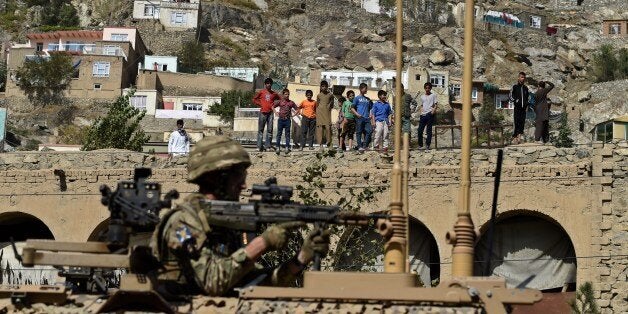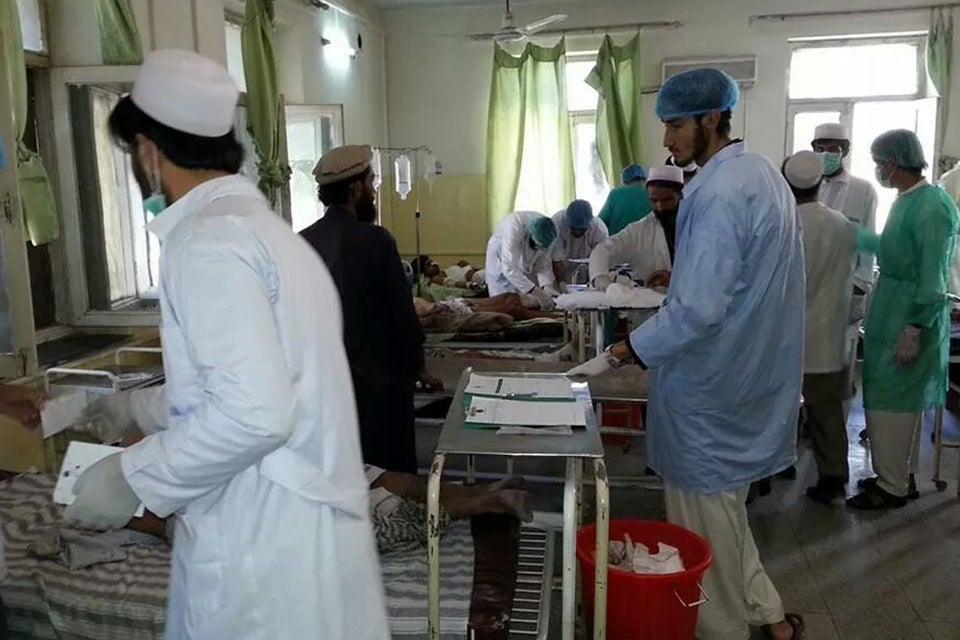
There is no shortage of bad news from Afghanistan over the past several months. The brief occupation of Kunduz, a small city in northern Afghanistan, started a cycle of negative events: the accidental bombing by allied forces of the Doctors Without Borders hospital in Kunduz; a series of car bombs in the capital, Kabul; a revived Taliban campaign to retake portions of southern Afghanistan; a deputy district governor of Sangin district in Helmand province taking to Facebook to alert President Ashraf Ghani of the danger in the south.
As Oprah would say, how do you feel about Afghanistan today? Most would say pretty discouraged. But let's take a deep breath and put a couple of things in perspective.
In 2009, when I became the overall NATO operational commander with responsibility for Afghanistan (along with operations in the Balkans, off East Africa for counter-piracy and Iraq), essentially all of southern Afghanistan was under Taliban control. The Taliban flag flew proudly in most of the district capitals. Schools were under Taliban control. The new on-the-ground commander of NATO forces in Afghanistan, U.S. General Stan McChrystal, briefed me and the North Atlantic Council and said bluntly that "we were losing Afghanistan" and called Marjah "a bleeding ulcer."
The 300,000+ Afghan police and army both reportedly have approval ratings of over 80 percent.
By 2010-2011, we had increased our allied troop presence in country to over 150,000 troops from 50+ nations. At one point, we were losing hundreds of troops monthly, both killed and grievously wounded, and over the course of my time as the NATO Commander, I personally signed over 2,000 letters of condolence to those killed in action. Total Killed in Action (KIA) for the allies in 2010 was 710 and in 2011 it was 566. We lost. It was a hard time.
But we wrested control of the country back from the Taliban and set ourselves the task of creating, training and fielding over 300,000 Afghan security forces, both police and army. Over the next few years, we did just that, and we turned the vast majority of combat operations over to the Afghans.
In 2014, for example, the allied forces -- cut back by 90 percent -- lost only 75 KIA: this year we will probably end the year with under 30 KIA. The 300,000+ Afghan police and army both have approval ratings of over 80 percent, according to the recent and well-regarded annual survey of the Afghan people by the Asia Foundation. Today there are fewer than 15,000 allied troops in Afghanistan, mainly in training and advising roles.
Today there are fewer than 15,000 allied troops in Afghanistan, mainly in training and advising roles.
Alongside security gains, there have been significant improvements in civil society: health care access, infant mortality, life expectancy, educational access (especially to girls), democratic process and portions of the economy have all improved.
Yet alongside all of that are troubling storm warnings: in addition to the specific events of the past weeks, there continue to be high levels of corruption, an economy that struggles as the bulk of NATO troops withdraw, a fractious government split between President Ghani and Chief Executive Abdullah Abdullah and an increasing threat from the so-called Islamic State. The Asian Foundation Survey showed a high level of anxiety among the people of Afghanistan. It would be easy to finally shrug our collective shoulders and walk away, leaving Afghanistan to its own frustrating dynamic.
Yet beyond the headlines is a situation that still provides a reasonable chance at a successful outcome. A "reasonably successful" outcome, of course, means different things to different people, but a baseline would include: a functioning democratic government that is addressing corruption challenges; basic border control; capable security forces that minimize both Taliban and ISIS ability to hold and control territory; an economy growing at around 5-7 percent annually; good metrics in terms of education, life expectancy and infrastructure.
We saw what happened in Iraq when we withdrew the 15,000 trainers recommended by the Pentagon -- chaos followed and ISIS rose up to fill the vacuum.
How do we get there, working with the Afghan people and the international community? Here are a handful of ideas:
1.Continue to invest in the Afghan security forces.
While not inexpensive at around $4 billion per year, this is a tiny fraction of the cost we faced in maintaining 150,000 troops in Afghanistan five years ago. With over 300,000 billets, the Afghan Security Forces conduct well over 90 percent of all military operations, with limited support and mentorship from the allies. This will ensure casualty levels will remain very low as they are today and that responsibility for security remains with the Afghans. This bill should be shared among the 40 or so contributors, with the U.S. paying no more than 60 percent of the total.
2.Maintain 15,000 allied troops at four distributed bases in country for the foreseeable future.
Afghanistan is not fully ready to be left to its own devices in a security context. We saw what happened in Iraq when we withdrew the 15,000 trainers recommended by the Pentagon -- chaos followed and ISIS rose up to fill the vacuum. We still have troops in Korea, Germany, the UK and Japan decades after wars there -- maintaining 15,000 troops in Afghanistan is sustainable and reasonable. Their role should not include direct combat but instead focus on intelligence, planning, advising, mentoring and logistics. We'll also need robust special forces for some time to come, especially given the potential presence of ISIS.
3.Marshall international support for economic development.
This should be a private-public mix, with the principle objective being exploitation of the mineral wealth of Afghanistan, estimated to be over $1 trillion. Organizations like the World Bank, the new Asian Infrastructure Investment Bank and the U.S. Overseas Private International Corporation can help. Other sectors that show promise in Afghanistan are telecommunications and construction, and the nation's potential as a trading crossroads is also reasonably high.
4.Address corruption.
One of the top dis-satisfiers and something that drives the people toward the Taliban, is a sense of corruption that permeates from the cop on the street to the highest levels of the government. It also discourages international investment and aid, much of which is siphoned off to private hands. This has been highlighted again and again, most cogently in the recent past by journalist and scholar Sarah Chayes in her superb (and chilling) book, "Thieves of State." Attacking corruption must be given impetus by the international community and results inspected regularly.
5.Exploit Taliban weaknesses.
Despite some tactical successes of late, the Taliban are facing a series of fundamental challenges. The succession following the death of their legendary one-eyed leader, Mullah Omar, has been fractious, with a new leader, Mullah Omar trying to consolidate power with mixed results. In the seam, ISIS is attempting to gain traction. The good news is that this will produce a weaker, more decentralized Taliban; but the bad news is that it will be unpredictable and more difficult to collect intelligence against. It may allow creative diplomacy to peal off segments of the Taliban and bring them to the negotiating table, or even find common cause against the ISIS threat.
The deaths earlier this week of six brave U.S. soldiers has shone a spotlight on the worrisome situation in Afghanistan -- but we still have cards to play and all is not lost. By taking an international, interagency and private-public approach to the significant challenges, we have our best chance at creating an imperfect but reasonably successful outcome. We must not lose hope.
As Supreme Allied Commander at NATO from 2009-2013, Admiral Stavridis was in command of operations in Afghanistan. He is currently Dean of The Fletcher School of Law and Diplomacy at Tufts University.

